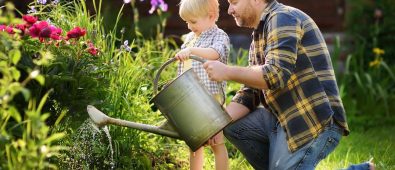Planting the correct flowers has shown how organic gardeners bring beneficial insects, such as Ladybugs, Ground beetles, Lacewings, & other insects that feast on unwanted pests. Researchers have discovered that some flowers bring more beneficial insects through their nectar and pollen. Some flowers are extremely better sources of these two factors which can keep beneficial insects than others.
If you are preparing to cultivate an organic garden, one that doesn’t rely on chemical pesticides to prevent unwanted insects & bugs, you want to learn what kind of flowers you should plant. This article will list down some of the flowers that can enhance the artistic attraction of your garden and bring beneficial insects in the process. Send flowers online to Dehradun to your beloved to express your love and care.
Yarrow
This perennial flower attracts a broad array of carnivorous bugs, along with butterflies who please in the large nectar-rich blossoms. The flowers, which appear in a range of red and yellow colors and white, grow from a spreading mat of lacy foliage that has a pleasant herbal fragrance when crushed.
Sweet alyssum
Honey-scented white flowers fully cover this ground-hugging yearly for months on end through the growing season. Because it is short and low-growing, some gardeners plant it as a groundcover for bigger vegetables, such as kale & chard. Sweet alyssum usually seeds itself — plant it once and it will grow again year after year.
Cornflower
This is a truly wonderful wildflower that has extrafloral nectarines. This suggests that the leaves of this flower also free nectar when they are blooming. With that said, this plant becomes very engaging to ladybugs, helpful wasps, and lacewings. It is also quite simple to grow. All you have to do is put the seeds right in the garden during the fall season or early spring.
Marigold
A small annual, this orange- & yellow-flowering variety is quickly mixed in with vegetable beds to add color & pest control services. In addition to assisting with above-ground pests, marigold roots are poisonous to root-knot nematodes, a natural pest that attacks vegetables from below.
Cup Plant
This is a flower that can grow to 6-8 feet. The leaves of this plant cover around the stalk, creating a deep cup that can collect rainwater. Beneficial bugs, insects, & small birds can utilize the leaves as landing pads, and they can take water from the cups. This flower is quite attractive with clusters of yellow flowering that blooms in the middle to late summer.
Goldenrod
The flowers online above bloom essentially in spring & summer, while goldenrod begins blooming in late summer & continues into fall. This is important, as beneficial insects are likely to go on if the habitat is not running optimally. Its free yellow blossoms are a stunning late-season interest to a cottage-garden-style flower border.
Borage
This is an herb with shiny blue clusters. They are good with a cucumber flavor. This plant is highly engaging to beneficial bugs. Green lacewings favor laying their eggs on the barrage. You can plant this flower at the heart of your garden.
Hardy Geraniums
Such a clever and natural plant, the hardy geranium comes in various shapes, colors, & sizes and can be quite useful for providing color and covering in a large border. As a reward for these colorful blooms, insects love them too.
Wisteria
Have you made a south-facing wall or pergola? Wisteria is just excellent as it pours its odorous and dainty blooms over your walls. It has protein-rich pollen and also appears in white as well as the legendary bluey purple.
The Sunflower
Fairy or tall, these colorful balls of yellow are not just a big mood lifter and supplier of oil & seeds but the bees like them too. Grow small species of sunflower in a pot or big ones up facing a wall and let them serve as a beacon to bees.
Mint
Your herb garden can give an aromatic feast for insects and mint is no different. Again there are loads of types of mint, (and don’t forget it can be invasive) but the summer flowers will have your bees and other insects well.
Before you begin planting trees, blossoms, and crops in your garden, you must head to do some analysis about the flowers that attract beneficial insects. Attracting these insects is important in maintaining the health and value of your garden since they can keep undesired pests out.



